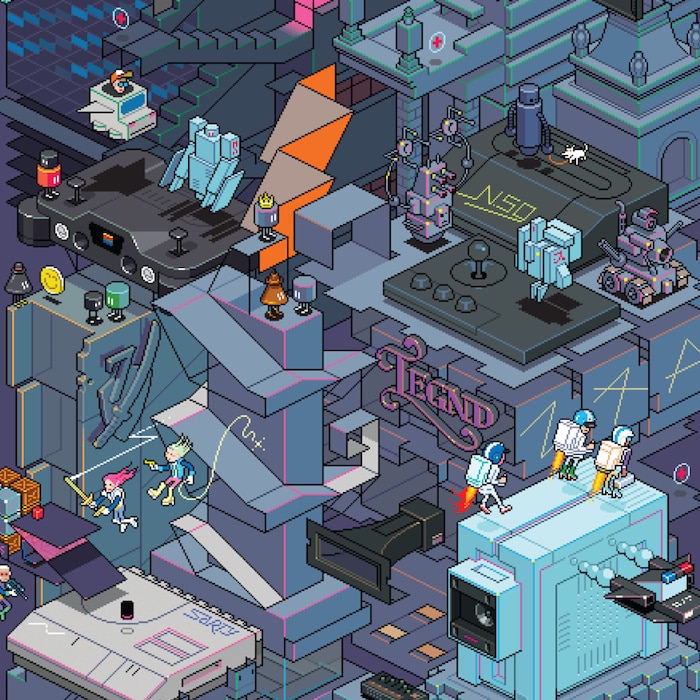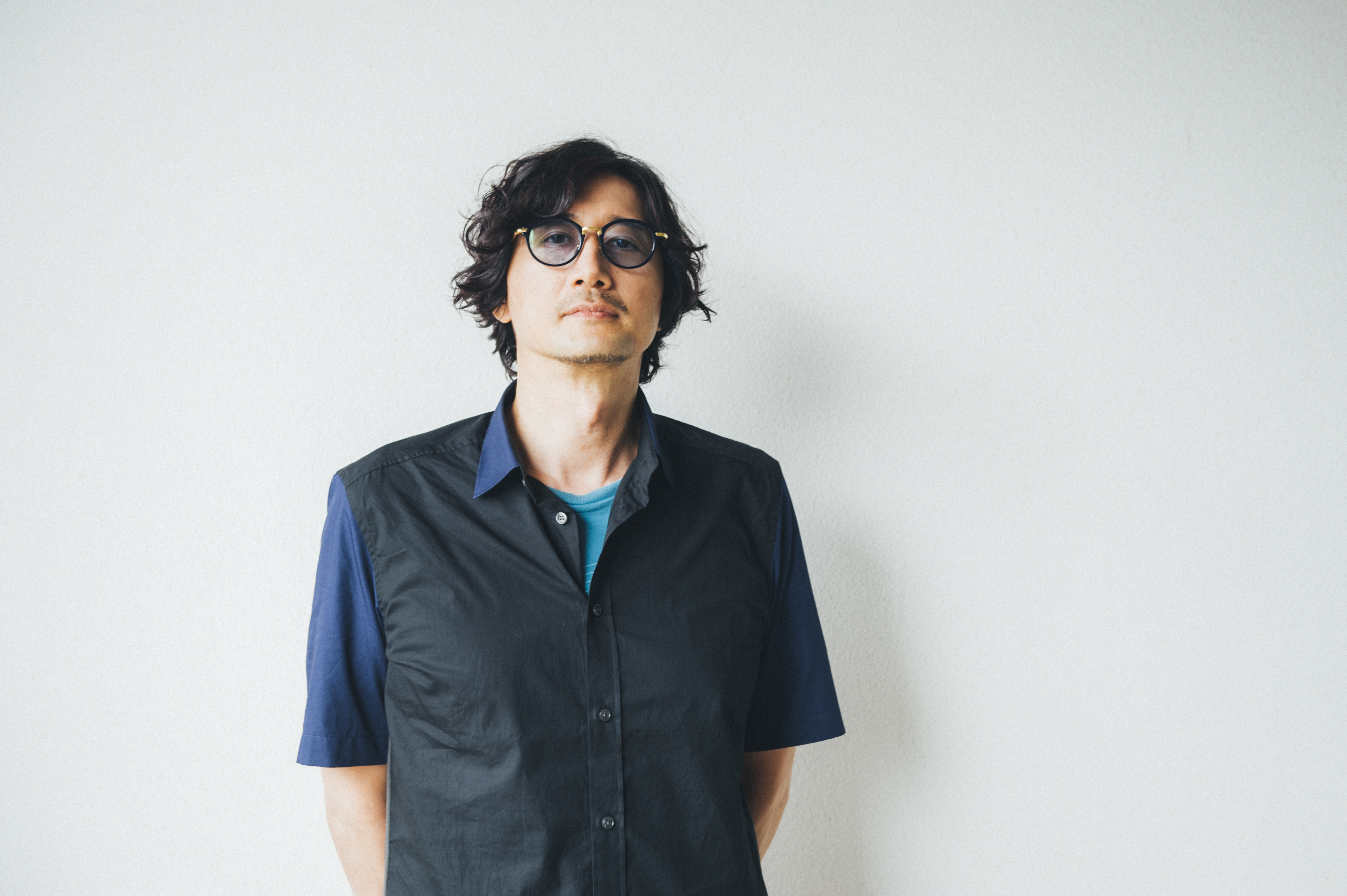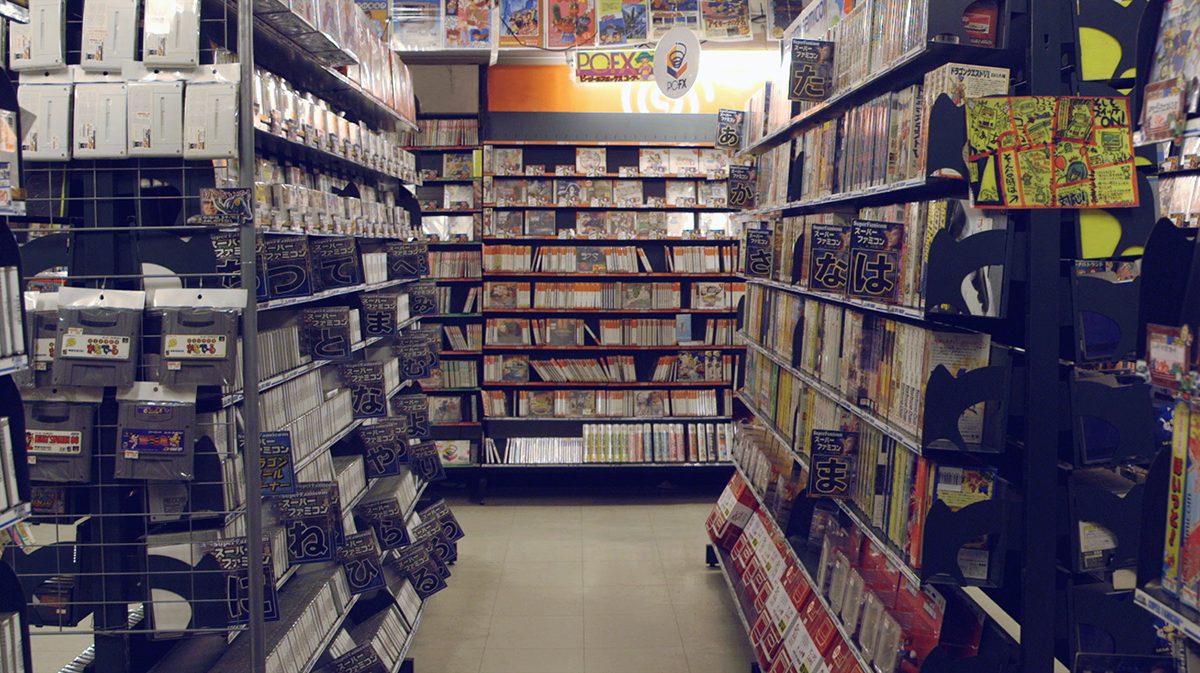Interview: Soichi Terada
The multi-talented Japanese producer reflects on his junglist past and history composing video game music
These days, Soichi Terada has become famous in dance music circles for the incredible (and incredibly rare) music he put out in the ’90s through his Far East Recording imprint. (It recently reached a wider audience via a blockbuster compilation released on Rush Hour.) But Terada’s love affair with jungle, spurred on by a life-changing bassline heard through the infamous Tokyo nightclub Yellow’s soundsystem around ’94, led to a job composing the soundtrack to Ape Escape, one of the PlayStation’s most cherished games – and one way ruffneck junglism found its way into children’s living rooms around the world. In this edited excerpt from his translated interview with Nick Dwyer, aired in full in the first episode of the second season of Diggin’ in the Carts on Red Bull Radio, Terada discusses his path through electronic music.

You grew up in Tokyo as a teenager in the late ’70s. This was a time when Japan was experiencing incredible economic growth. There was all this new technology; synthesizers, video games, game centers. Was it an exciting time? Can you paint us a picture of life as a teenager, growing up in Japan in the late ’70s?
The late ’70s were right around when synthesizers were becoming prominent. Music with synths in it was becoming more of a familiar part of life. As a teen, this was extremely fun. At first, you had only Pong, but from there, in not even five or six years, we got things like Space Invaders and Pac-Man. As a kid back then, it seems like video games just became super fun overnight.
You’d hear all these legendary stories about “Invader houses,” and the Invader boom that happened in Tokyo in the late ’70s: all these dark arcades filled with cigarette smoke, where the bad kids would go and smoke and do nothing but play Space Invaders, and there were only Space Invader machines in these arcades. Did you ever go to Invader houses?
Well, Invader houses were really scary places for me, as a middle schooler. It was all grown-ups there who had lots of money, you know? Invader houses weren’t really places for kids. I really only went to game centers occasionally back then. But once I hit high school, I couldn’t stay away from them. Sometimes I would just ditch school altogether and head straight for the game center.
One thing we should speak about is, I think literally every single Japanese electronic artist, and pretty much every single Japanese video game composer, will say that Yellow Magic Orchestra was a massive influence. And I’m gonna hazard a guess that for you it was possibly the same. Can you remember the first time you heard or saw YMO?
It was synthesizer music, but also disco. Both of those aspects were shocking. It was my first time hearing disco made on synthesizers, and I thought it was coolest thing ever. I had heard music by Isao Tomita before, and some of his stuff had a tiny bit of disco flavor to it. But YMO really took the disco and cranked it up to 11, which I thought was super fun.
I would go to the record store and put my own records in the sleeves of other records, and then put them back on the shelves.
All of this technology was being created in Japan; all these companies like Yamaha, Roland and Korg. Was there a sense of pride in the fact that these machines were being made in Japan?
Japanese synthesizers are really cool, and I used plenty of Japanese gear made by Yamaha, Roland and Korg. But it was always the synth from the makers overseas that caught my eye. The reason being was that YMO and all the other famous musicians were using overseas synthesizers. They were also super expensive, due to the customs duty. Looking back, I realize that Japan had set the taxes really high.
By the middle of the 1980s, you had started making music yourself. You were in part of a band called Tax Flee, which was signed to Polydor. You got very much caught up in the hip-hop explosion that happened in Japan, especially Tokyo, in the late ’80s, and you had a group called Puzzle Jam Rockers. But it was your house productions – your own Far East Recording label, and the music that you released on that label – that is seeing you performing all over the world, 25 years later. What was the attraction to house music?
House music was just interesting, and I was absolutely sure that they were making it with samplers and computers, just like I made my music. So, I kind of wanted to make my own answer. I wanted to meet their sounds and say, “Look what I did.”
As for running the label, I didn’t do anything, really. I just passed the records I made around to people, since I didn’t have any clue of how to sell them. I’d give them to friends. I didn’t have the faintest idea about distribution, either. So a lot of times I would go to the record store and put my own records in the sleeves of other records, and then put them back on the shelves.
Moving on a few years towards the mid-’90s, something started creeping into your life: jungle. Tell us about the beginnings of your passion for jungle.
The first time I really got into jungle was when I heard this massive sound on the soundsystem at a Tokyo club called Yellow. I could hear a ton of sub-bass, and was just like, “Oh, man. This is amazing.” Maybe on the soundsystems of the 1990s we couldn’t get the low bass tones as we can now, but when I heard jungle on a Yellow soundsystem in ’94 I just fell in love with it, jungle blasting at huge volumes.
What was it about the production of jungle that drew you to it?
When people make jungle, most folks are gonna be like, “Oh yeah, there’s the Amen break.” But, I had no idea what an Amen break was. I thought you could just speed up any old breakbeats and make it jungle.
I guess this is around the time that the Sumo Jungle project was born. Tell us about Sumo Jungle.
It started with a friend’s wedding in Hawaii. While there, I found a CD with this Hawaiian song about Hawaiian sumo wrestlers. I brought the album because of the cover, and it had that song on it. It was a song about [sumo wrestlers] Akebono and Musashimaru and Konishiki. I had this idea to make a jungle version of it. The tempo was like exactly half of that of jungle, so I knew I could make it into jungle. The title of the track was “Thunder From Heaven,” so I just went and did my own remix and slapped the name “Sumo Jungle” on it. Not the best name, but Sumo Jungle is what I went with. And then I released it from my label, just on a small run of 1,000 pressings.
At the time, I was working in a record store in New Zealand. I was 15 years old, and I was the jungle buyer. I was deeply, deeply, deeply passionate about jungle. And I remember we ordered Sumo Jungle, and we stocked Sumo Jungle. And I remember it was interesting, because it was the first time we had a jungle record that was made from a producer outside of the UK. Were you aware, at the time, that you were one of the only people in the world outside of the UK making and releasing jungle?
Is that true? As it happens, a lot of my friends were probably making their own jungle tracks, too. I guess maybe it was because I put it on vinyl. Sumo Jungle reached New Zealand – that makes me happy to hear!
As the story goes, there was an employee at Sony who loved Sumo Jungle, and then he approached you to make a certain soundtrack for a certain game.
Two years after I put out Sumo Jungle, there was this director making a game on the PlayStation, a guy who was apparently really into bass music. The game he was making was about catching monkeys. His game was meant to push the analog controller of the PlayStation to the limit. This director reached out to me about doing the soundtrack for his game. He told me that the main character of Ape Escape, who was named Spike in English, was the type of kid who was always on the run. That running fit really well with the 160 or 170 BPM of jungle, so a lot of the tracks ended up being at that tempo. The director agreed that the beat of jungle and drum & bass really suited the pace of the game.
It must be noted that Ape Escape wasn’t the first game you composed music for, was it? There was another mythical game that I believe you worked on.
The truth is that Sony tried to make a Final Fantasy-like game, and did make one. Me and a guitar player made the soundtrack for it. But the director of the role-playing game for Sony kind of got stuck in a fantasy world. He had a mental meltdown in the middle of making it, so it got canceled. He never made it back from his fantasy world, so they had to call the project off. I remember it made me think that game industry was a scary place.
So, that was your first experience working in the games industry, and the director goes crazy.
Yeah. He couldn’t find his way back from this world he’d created for himself. He was stuck in his own world, and not the real one.
That is mad. Was it a big budget?
I think so. They canceled it even though it was a big project, so whatever illness the director had must have been very serious. That’s why they had to stop it.
I mean, how much music had you created for the game? Had you done most of it?
All of it. The soundtrack was done, but it never saw the light of day.
So to this day, no one has heard the music, and no one will ever hear the music?
No, no.
Wow. And I guess you created a lot of tracks, right? Compared with shooting games and racing games, the amount of tracks needed for role-playing games is always so much higher.
We made around 40 tracks, but I made them with the guitarist, so it was like 20 each. The guitarist was really shocked, too. Everyone was. But back then, the game industry was really a proper industry, almost in like a manufacturing sense. There were absolutely tons of games in production at any one time. Just one getting canned wasn’t too rare of an occurrence.
When you’re making Sumo Jungle, maybe you’re imagining the dancefloor and people dancing, and the way that people will respond to the sub-bass or the way the breaks will make people move and dance; you’re making music with the dancefloor in mind. But when you’re making jungle for the Ape Escape game, are you imagining the player?
It’s exactly the same. Nothing different at all. I just make things that I hope will make people want to move. The fact that it’s for a video game never really enters my mind.
With Ape Escape, did it make you happy that millions of kids around the world were getting a taste of jungle?
It made me super happy. The sound of jungle is much more massive than what you hear in my Ape Escape music, but I was glad it at least provided an entry.
Could you have ever imagined that, 35 years later, you’re making more music than ever before and traveling the world with your music?
Never. The thought of all this never once entered my head. I couldn’t imagine what I’m doing now, even just two or three years ago. I’m extremely happy.

